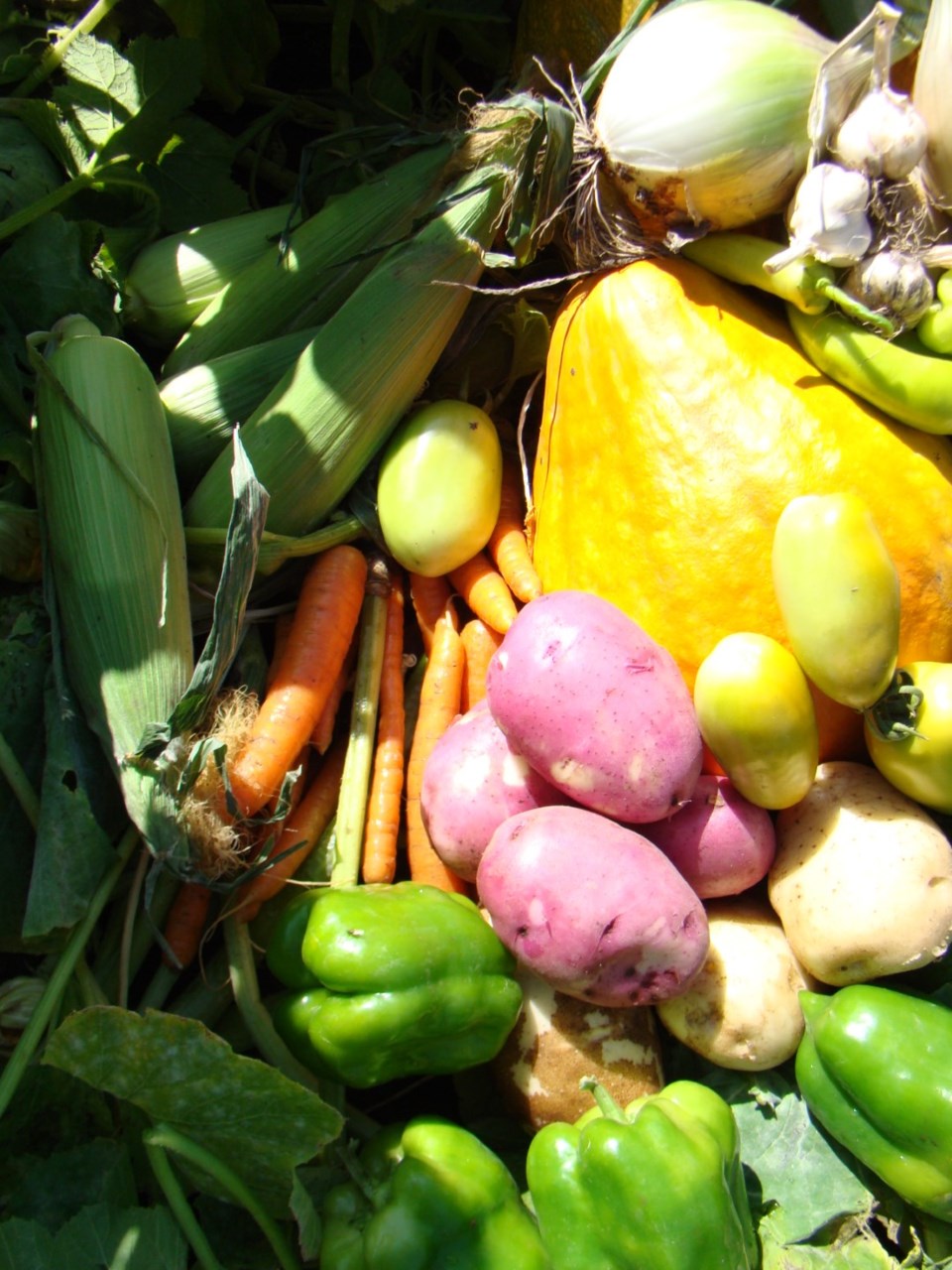The days are getting shorter and some of the nights are cooler. Fall is a bittersweet time for vegetable gardeners: all the hard work of the growing season is finally paying off with a delicious and varied harvest. However, we know the supply of fresh, homegrown vegetables is closing.
Not all plants respond equally to frost. Some vegetables improve after a slight frost while others are destroyed by temperatures that are just slightly above 0 C. Vegetables that must be harvested before a killing frost (0 C) include cucumbers, beans, eggplant, lettuce, watermelon, peas, peppers, zucchini, tomato, cantaloupe and corn. While the actual corncob may not freeze, once the plants are frozen the cobs should be harvested as soon as possible as toxic nitrates will build up in the cobs since the unfrozen roots continue to take up nitrogen from the soil.
Cantaloupe is usually harvested at “full slip” when the fruit easily detaches from the vine at the stem end. If frost is imminent and the fruit does not detach from the vine, harvest the fruit with approximately 1cm of vine attached and leave it at room temperature for 6-7 days. If the cantaloup fruit has reached physiological maturity, it will continue to ripen after harvest. If it is not mature, the fruit will rot.
Mature green tomatoes and peppers will continue to ripen in storage. Mature green tomatoes are generally a slightly duller green with some hint of colour change. Store green tomatoes at 15ºC in a well-ventilated area. Green peppers are ready to harvest when their walls are firm to the touch. Store them at room temperature in a paper bag to ripen to red. Ethylene gas released by the peppers encourages the colour change. Add a banana to the bag for faster ripening. Red peppers should be stored in the fridge.
Onions are ready to harvest once their tops have fallen over. Stubborn onion tops can be “encouraged” to fall over by lightly stepping on them. Trim off the stems at the point at which they’re broken. Harvest onions if frosts of -1ºC or lower are predicted, allowing them to cure in a warm location (20ºC) with good air movement for about one week. This can be done outdoors in the sun if weather conditions are favourable. After curing, the tops should be removed and the onions placed in cool storage (ideally 1-2ºC with 70% relative humidity).
Leeks can withstand a few degrees of frost and have a slightly sweeter flavour if they are exposed to cooler temperatures. Unlike onions, they are not destined for long-term storage. Trim off the loose leaves and store them in a clear plastic bag with tiny holes for air exchange in the fridge.
Cabbage can withstand up to 3 degrees of frost. Brussels sprouts benefit from several degrees of frost to encourage a sweet flavour and can withstand several hard frosts of -4 or -5ºC as long as they thaw during the day. Ideal storage conditions for cabbage and Brussels sprouts are 1ºC with 80% relative humidity.
Root and tuber crops such as beets, carrots, rutabagas and potatoes should be left in the ground for at least one killing frost to improve their sweetness. As long as night temperatures do not dip below -4ºC and are above 8ºC during the day, the soil provides enough insulation to prevent the roots and tubers from freezing. To encourage potato tuber skins to set, the tops should either be dead or physically removed for at least one week before harvest.
Remove the loose soil from roots and tubers before storage, but avoid washing them as excess moisture in any fresh wounds incurred during harvest may encourage root rot. Do not dry root or tuber vegetables in the sun as this only warms them up and compromises storage. Light encourages the production of glycoalkaloids in potatoes, giving them a bitter flavour, and are toxic at high levels.
Although winter squash and pumpkin vines freeze at 0ºC, the mature fruit can survive -4ºC. Once harvested, cure them indoors in a warm (20ºC) dry location. Long-term storage in a slightly cooler, dry basement is recommended for pumpkins and winter squash. Green pumpkins can be ripened to orange in a warm, sunny, dry location.
Finding ideal storage conditions for your garden produce can be a challenge. Most home refrigerators have limited space for the bulky harvest of cabbage, potatoes and other root crops. One storage solution is the use of covered (to increase humidity) wooden boxes in a garage where the temperature is kept just above 0ºC through the winter. Root cellars also provide good winter storage areas for most root crops as long as temperatures are kept cool and the humidity can be kept slightly elevated.
After all the hard work put in during the growing season, it’s a wonderful reward to be able to enjoy those homegrown vegetables into the fall and winter months.
Bantle is a horticulturist living in Saskatoon.
This column is provided courtesy of the Saskatchewan Perennial Society (SPS; [email protected]). Check our website () or Facebook page () for a list of upcoming gardening events.




